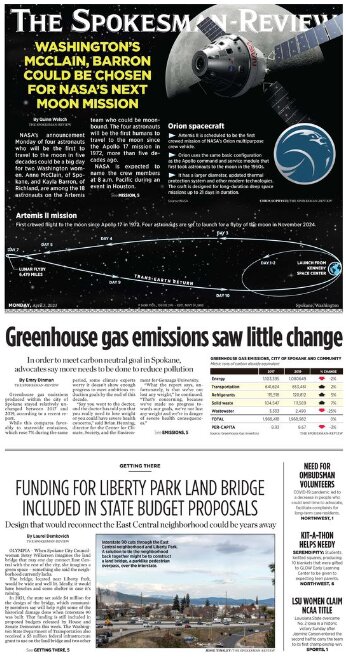What are readers in your community passionate about?
To connect with your audience and grow subscribers and engagement, it's important to know what the core things are that readers in your community care about and for your staff to think about the paper as the community's newspaper — not "yours," Rob Curley, editor of The Spokesman-Review in Spokane, Washington, told attendees at the Mega-Conference.
While advertising used to make up 80 percent of The Spokesman-Review's revenue, subscriptions now make up 70 percent of its revenue. The "secret sauce," he said, must be based around this simple math.
Their reader-focused community newspaper strategy — The Five Ps — focuses on the importance of listening to their readers and partnering with them in new ways:
If you focus on The Five Ps, as part of your reader-focused strategy, you'll start to see the needle move, Curley said. Since 2016 when these changes (plus additional steps) were implemented, The Spokesman-Review has seen its online numbers jump from 3 million to 9 million, he said.
Design also became an important part of the newspaper's strategy. While readers can easily find 24-hour news on the internet, newspapers should provide greater depth — the "how" and the "why" behind the news.
Because the how and the why are complicated, an emphasis on design helps to draw the reader in. "It's got to be more than just about being the paper of record," he said. "It has to be about the paper being interesting." Design, he said, can add a dash of delight, make the reader comfortable and give the paper credibility.
View a few recent front pages:

To the right is an image of the front-page from the morning of his talk. "The strategy," he said, "is a little bit like filling a bowl full of Skittles and then dumping a bottle of vitamins into it. People think they're eating candy, but they're really sustaining themselves and making themselves better."
Curley also spends a lot of time working with the community. For example:
He spoke with a high school English class about persuasive writing, specifically about how to write an extended letter to the editor. In addition to publishing their letters in The Spokesman-Review, the poster below now hangs in the foyer of the high school. "By the way," he said, "none of them knew what The Breakfast Club was ... these are the moments of serendipity that I love."
Additional ways that The Spokesman-Review connects with its community include:


In addition to being fun for the community, these events help to promote the newspaper and its journalism. The paper also has set up a community service fund that is helping to fund journalism.
For the longest time, the number one thing that dictated whether someone would renew their subscription to The Spokesman-Review was whether they were on Easy Pay, Curley said. "Now, the number one thing is whether they come to our events. It's the highest retention rate of any newspaper in America."
He said, "Our readers really started to take a stake in all of this. And, this community ownership of journalism got bigger and bigger and bigger. Last year, the community paid for 28 percent of our newspaper's payroll. We got to do things that most people wouldn't get to do. We got to retain our Statehouse Bureau. We became the smallest newspaper in the United States with a D.C. bureau."
Spokane is home to the largest Ukrainian population in the United States, Curley said. Because readers felt it was important to send a reporter to Ukraine to cover the war, the paper sent a reporter there to write stories. It was powerful, he said, adding that the paper ran a line over those stories noting that this coverage was paid for by readers. "From what we can tell," he said, "this is the first known example of community-funded and community-sourced war coverage."
Every time the paper runs articles that the community helps to fund, those stories no longer carry The Spokesman-Review copyright. "They are Creative Commons and anyone can run them."